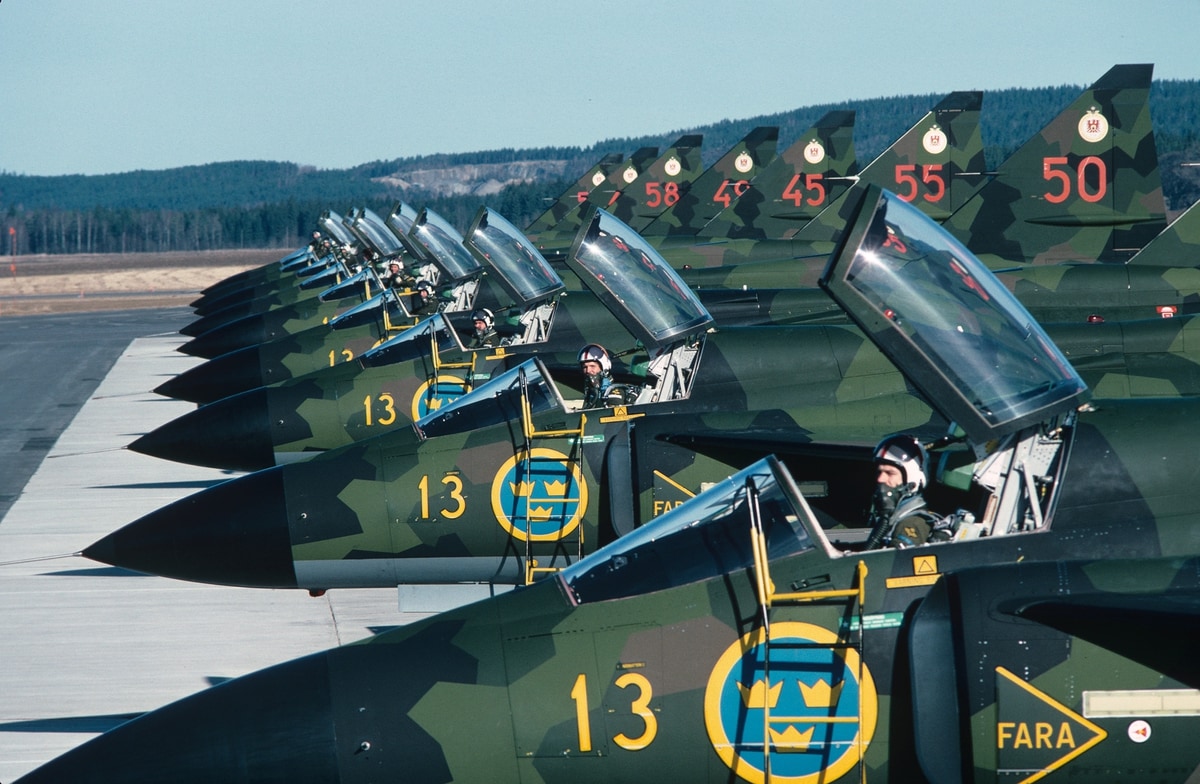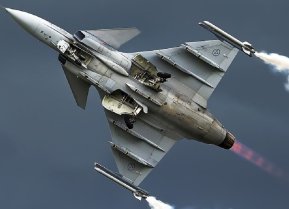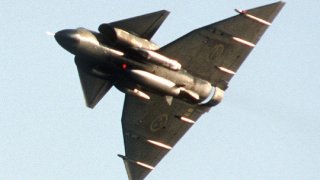The Saab 37 Viggen Was a Fighter Built for War with Russia
So, while Saab is best remembered in America for it’s 9-series automobiles, it’s perhaps the Saab 37 Viggen for which Saab should be most celebrated.
Meet the Saab 37 Viggen: Many car enthusiasts reflect fondly on Saab automobiles, which have maintained something of a cult following in America, despite not being sold in the last decade. I learned to drive on a 9-5 wagon, and still take a second look every time a Saab drives past with its distinctive Nordic styling.
Similarly, Saab has endeared itself to aviation enthusiasts, too, with its distinctively shaped, and surprisingly functional, jet fighters like the 35 Draken, the JAS 39 Gripen, and the 37 Viggen.
Saab 37 Viggen: What’s in a name?
The word Viggen has two meanings. The two meanings are disparate, yet conveniently, both seem appropriate for Saab’s 37 fighter aircraft.
The first meaning is a derivation of askvigg, which translates roughly to “thunderbolt,” but historically meant “thunderstone.” What is a thunderstone? A thunderstone is what Viking Scandinavians called the prehistoric axes that were occasionally excavated from the Earth. The Vikings believed the axes belonged to Thor, the God of Thunder, who had sent the axes to Earth in lightning strikes while he was hunting giants with his war hammer Mjolnir. The Vikings believed that the axes possessed magical properties, including the ability to protect the handler from lightning strikes. Indeed, the Viggen’s first nominal meaning is cosmically epic and appropriately Scandinavian.
The Viggen’s second nominal origin refers to vigg, the Swedish word for tufted duck. Less epic but still appropriate.
The origin story
The Viggen program, initially known as Aircraft System 37, dates back to late 1961. Back then, the Saab 37 Viggen program was the largest industrial endeavor that Sweden had undertaken. Ever.
Naturally, the Cold War inspired the Swedes to commit fully to such an industrial undertaking; fears of Soviet aggression had most of Europe on edge, and willing to invest in defense technology in a way that would be surprising today.
Through the 1960s, a shocking ten percent of Sweden’s research and development funding went directly toward Aircraft System 37. The Swedes are responsible for designing most of the program from scratch – the powerplant, ejector seat, reconnaissance systems, armaments, ground servicing equipment, and simulators.
The investment made and the work product created is pretty remarkable for a country as small as Sweden.

The unique design
By 1963, Saab had agreed upon a design for Aircraft System 37. The design was somewhat radical – with an aft-mounted double delta wing and small, high-set canards. The canards, especially, stood out; the Viggen would become the world’s first ever mass-produced airplane with canards.
Canards are not uncommon today, especially amongst European-designed fighters. In fact, the Dassault Rafale, IAI Kfir, Eurofighter Typhoon, and JAS 39 Gripen all have canards. But in the 60s, the canard simply did not appear on mass-produced aircraft.
The Viggen’s incorporation of a delta wing and canards were to meet certain requirements – often conflicting requirements – that the Swedish government set forth in the program. The Swedes demanded that their new jet be capable of short take-offs and landings (STOL).
Why? To allow for operation from Sweden’s Bas 60 dispersal system. The Bas 60 was a clever redundancy feature in which reinforced public roadways were doubled as military airfields during wartime. The ability to operate military aircraft from Swedish highways allowed for target dispersal (and plenty of contingencies). Also, in addition to being able to take off and land on roadways, the Swedes expected the Viggen to break the sound barrier and to have high maneuverability, with low turbulence sensitivity, at subsonic-low-level flight.
Really, the Swedes wanted a jet that could do a little bit of everything. Designers believed the delta wing and canards were the way to satisfy the myriad requirements.

The Viggen was built to serve in an attack role, as the preceding Saab 35 Draken was already serving adequately as an interceptor. With an attack function in mind, the Swedes hoped the Viggen would be capable of operating at high subsonic speeds, with high range, without consuming much fuel. Accordingly, the Swedes licensed the Pratt & Whitney JT8D engine and produced a modified version, Volvo’s RM8.
While the JT8D was used in commercial airliners, the RM8 featured updated tech and materials, including an afterburner and a variable nozzle, allowing operation at Mach 2 speeds. The engine also came equipped with a thrust-reverse feature, which allowed for landings on short runways as per the Swedish government’s expectations.
The Saab 37 Viggen first flew in 1967. Test pilots noted that the new aircraft was easy to control. Aerospace observers noted that Sweden had made tremendous progress in aerospace development.
By 1971, the Viggen was being delivered to the Swedish Air Force. The final product was a capable aircraft, reaching top speeds of 1,386 miles per hour and climbing at a rate of 40,000 feet per minute.
So, while Saab is best remembered in America for it’s 9-series automobiles, it’s perhaps the Saab 37 Viggen for which Saab should be most celebrated.
Harrison Kass is a prolific national security and defense writer with over 1,000 op-eds published. An attorney, pilot, guitarist, and minor pro hockey player, Harrison joined the US Air Force as a Pilot Trainee but was medically discharged. Harrison holds a BA from Lake Forest College, a JD from the University of Oregon, and an MA from New York University. Harrison listens to Dokken.
All images are Creative Commons.


